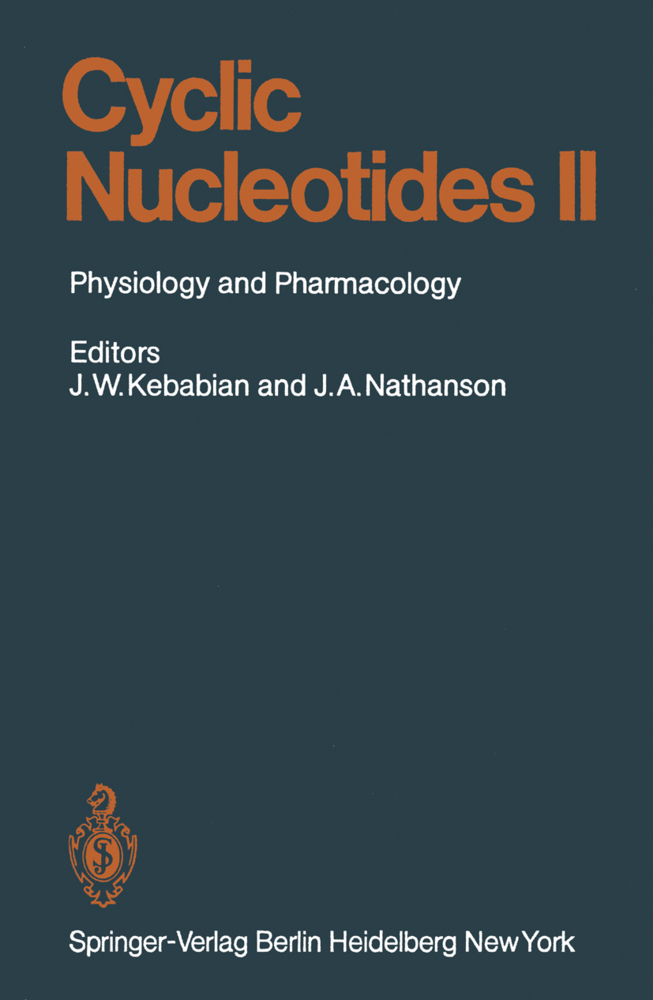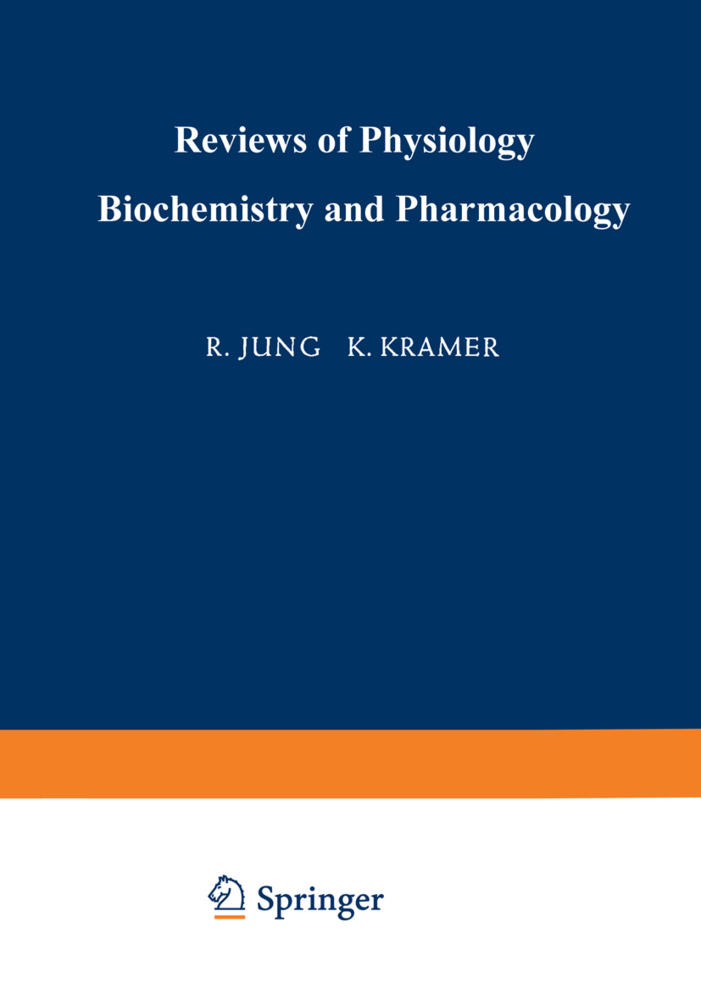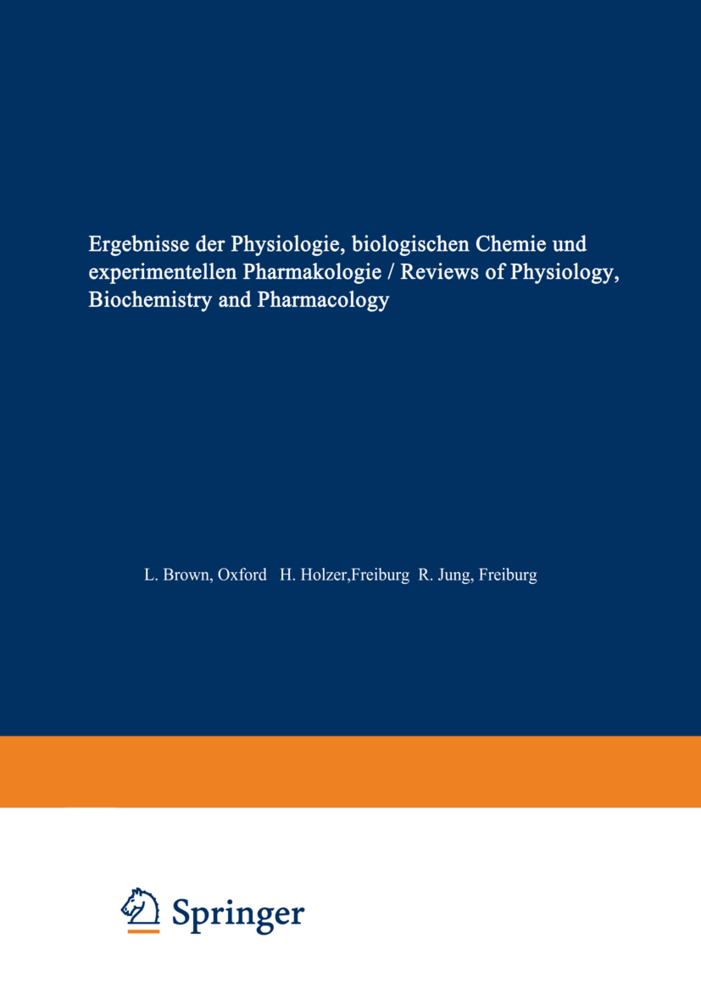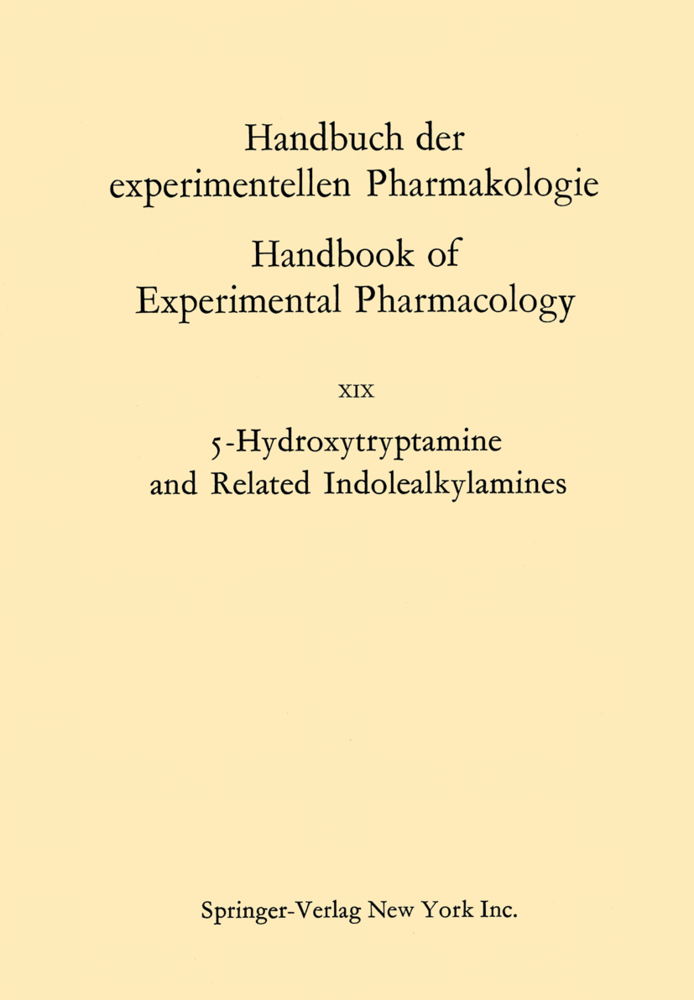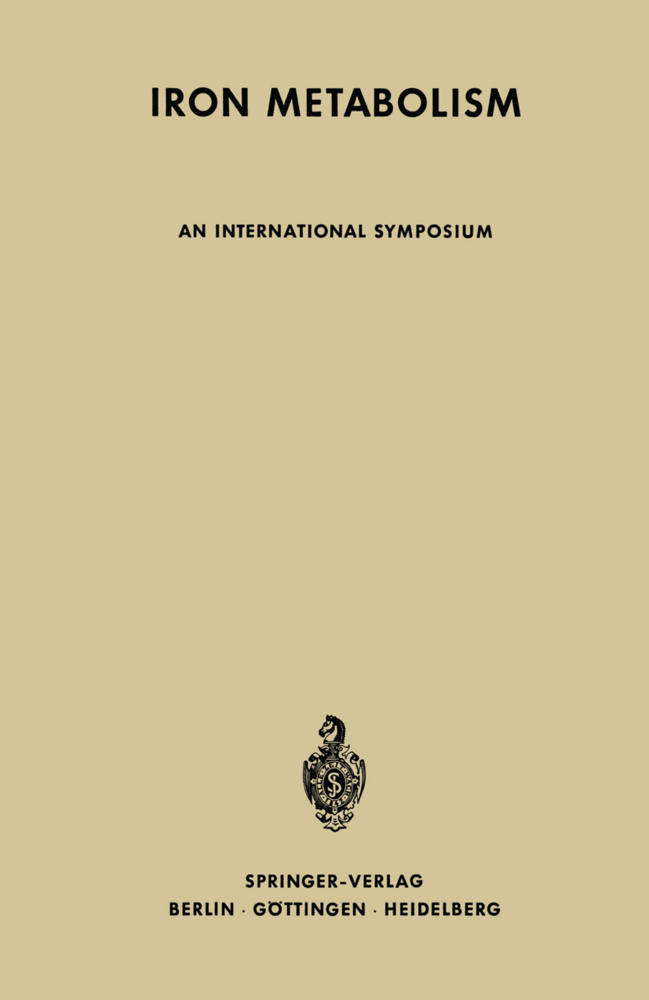Cyclic Nucleotides. Pt.2
Physiology and Pharmacology
Cyclic Nucleotides. Pt.2
Physiology and Pharmacology
Cyclic nucleotides are intimately involved in the consequences of either stimulation or blockade of receptors; therefore, an understanding of the biochemistry of cyclic nucleotides ought to be important for pharmacologists. Pharmacology is a science that among other things investigates chemical compounds that affect the physiology of cells, tissues and organs. Frequently pharmacologists account for the effect of low concentrations of a drug upon a tissue by invoking the presence of a receptor upon the surface of the cell. Traditional pharmacologists excelled at identifying and classifying the properties of receptors. A. J. CLARK'S monograph in the earlier series of the Handbook of Experimental Pharmacology (CLARK 1937) summarized the mathematics underlying the traditional pharmacological approach towards receptors. By its nature, however, classic pharmacology provided little useful information about the intracellular events occurring as a consequence of occupying a receptor; for example, ALQUIST (1948) identified the beta-adrenocep tor, but he did not provide any insight into how stimulation of the receptor produces tissue-specific physiological responses. The discovery of cyclic AMP by RALL and SUTHERLAND (see RALL, Vol. I) led to biochemical investigations of many different receptors (including ALQUIST'S beta-adrenoceptor) that share a cyclic nucleotide as a common factor in the biochemical mechanisms that translate the occupancy of receptors into physiological effects. Ten years ago, in the introduction to their monograph on cyclic nucleotides, ROBISON et al. (1971) commented on the rapid growth of interest in cyclic nucleotides over the preceding years.
17 Regulation of Lipid Metabolism by Cyclic Nucleotides
18 Regulation of the Cell Cycle and Cellular Proliferation by Cyclic Nucleotides
19 Regulation of Development by Cyclic Nucleotides and Inorganic Ions
20 Regulation of Cell Secretion: The Integrated Action of Cyclic AMP and Calcium
21 Regulation of Water and Electrolyte Movement in Kidney by Vasopressin and Cyclic Nucleotides
22 Regulation of Cellular Excitability by Cyclic Nucleotides
23 Regulation of Cardiac Contractile Activity by Cyclic Nucleotides
24 Cyclic Nucleotides as First Messengers
Section IV. Physiology and Pharmacology of Organ Systems
25 The Role of Cyclic Nucleotides in the Nervous System
26 The Role of Cyclic Nucleotide Metabolism in the Eye
27 The Role of Cyclic Nucleotides in the Control of Anterior Pituitary Gland Activity
28 The Role of Cyclic Nucleotides in the Thyroid Gland
29 Parathyroid Hormone, Bone and Cyclic AMP
30 The Role of Cyclic Nucleotides and Calcium in Adrenocortical Function
31 A Role of Cyclic AMP in the Gastrointestinal Tract: Receptor Control of Hydrogen Ion Secretion by Mammalian Gastric Mucosa
32 The Role of Cyclic Nucleotides in the Vasculature
33 The Role of Cyclic Nucleotides in the Pineal Gland
34 The Role of Cyclic Nucleotides in Epithelium
35 The Role of Cyclic Nucleotides in Platelets
36 Cyclic Nucleotides in the Immune Response
37 The Role of Cyclic Nucleotides in Invertebrates.
Section III. Physiology and Pharmacology of Cellular Regulatory Processes
16 Regulation of Carbohydrate Metabolism by Cyclic Nucleotides17 Regulation of Lipid Metabolism by Cyclic Nucleotides
18 Regulation of the Cell Cycle and Cellular Proliferation by Cyclic Nucleotides
19 Regulation of Development by Cyclic Nucleotides and Inorganic Ions
20 Regulation of Cell Secretion: The Integrated Action of Cyclic AMP and Calcium
21 Regulation of Water and Electrolyte Movement in Kidney by Vasopressin and Cyclic Nucleotides
22 Regulation of Cellular Excitability by Cyclic Nucleotides
23 Regulation of Cardiac Contractile Activity by Cyclic Nucleotides
24 Cyclic Nucleotides as First Messengers
Section IV. Physiology and Pharmacology of Organ Systems
25 The Role of Cyclic Nucleotides in the Nervous System
26 The Role of Cyclic Nucleotide Metabolism in the Eye
27 The Role of Cyclic Nucleotides in the Control of Anterior Pituitary Gland Activity
28 The Role of Cyclic Nucleotides in the Thyroid Gland
29 Parathyroid Hormone, Bone and Cyclic AMP
30 The Role of Cyclic Nucleotides and Calcium in Adrenocortical Function
31 A Role of Cyclic AMP in the Gastrointestinal Tract: Receptor Control of Hydrogen Ion Secretion by Mammalian Gastric Mucosa
32 The Role of Cyclic Nucleotides in the Vasculature
33 The Role of Cyclic Nucleotides in the Pineal Gland
34 The Role of Cyclic Nucleotides in Epithelium
35 The Role of Cyclic Nucleotides in Platelets
36 Cyclic Nucleotides in the Immune Response
37 The Role of Cyclic Nucleotides in Invertebrates.
Kebabian, P. D.
Nathanson, M. D.
| ISBN | 978-3-642-68395-4 |
|---|---|
| Artikelnummer | 9783642683954 |
| Medientyp | Buch |
| Auflage | Softcover reprint of the original 1st ed. 1982 |
| Copyrightjahr | 2011 |
| Verlag | Springer, Berlin |
| Umfang | XXX, 888 Seiten |
| Abbildungen | XXX, 888 p. |
| Sprache | Englisch |

